Poster: Hot Topics in MRS
Electronic Power Pitch Poster
Spectroscopy & Non-Proton MR
14:45 - 15:45
Tuesday, 19 June 2018
Power Pitch Theater B - Exhibition Hall
| |
|
Plasma # |
|
0443.
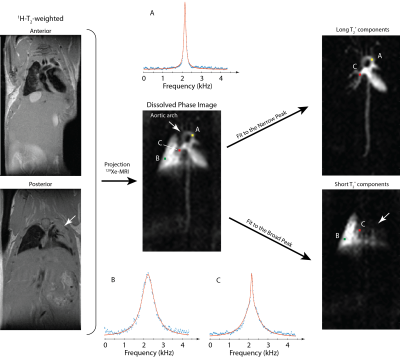 |
16 |
 Structural Determination Using 129Xe NMR Line-shape in Chemical Shift Imaging Structural Determination Using 129Xe NMR Line-shape in Chemical Shift Imaging
Stephen Kadlecek, Mehrdad Pourfathi, Luis Loza, Ian Duncan, Kai Ruppert, Hooman Hamedani, Sarmad Siddiqui, Yi Xin, Faraz Amzajerdian, Harrilla Profka, Ryan Baron, Mary Spencer, Tahmina Achekzai, Shampa Chatterjee, Maurizio Cereda, Rahim Rizi
We present a method to discriminate dissolved 129Xe spectra by tissue type and location based on local variations in T2*. Mixed contributions of parenchyma and vasculature can be separated almost completely. The method is particularly useful to high field imaging in species lacking distinct dissolved phase spectral components.
|
|
0444.
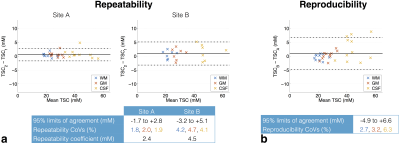 |
17 |
 Standardisation and quantification of 23Na-MRI: repeatability and reproducibility of sodium imaging Standardisation and quantification of 23Na-MRI: repeatability and reproducibility of sodium imaging
Damien McHugh, Frank Riemer, Daniel Lewis, Fulvio Zaccagna, Ferdia Gallagher, Geoffrey Parker
Based on its sensitivity to cell viability and tissue microstructure, sodium MRI has the potential to provide quantitative biomarkers of tumor grade and response to therapy. For biomarkers such as total sodium concentration (TSC) to have clinical utility, they require technical and biological validation. This work focuses on the technical validation of TSC, specifically assessing the repeatability and reproducibility of measurements in healthy volunteers. The results presented here show consistent TSC measurements across repeated scans at different sites, and good repeatability and reproducibility (coefficients of variation, CoVs < 10%).
|
|
0445.
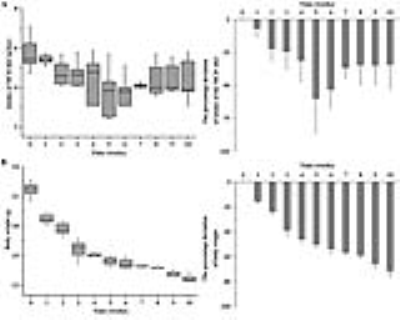 |
18 |
 Improved Quantification of Hepatic Fatty Acid Metabolism in Nonalcoholic Steatohepatitis: Serum Biochemistry and In vivo Proton MRS Study with Spin-Spin Relaxation Time Correction at 9.4 T Improved Quantification of Hepatic Fatty Acid Metabolism in Nonalcoholic Steatohepatitis: Serum Biochemistry and In vivo Proton MRS Study with Spin-Spin Relaxation Time Correction at 9.4 T
Kyu-Ho Song, Min-Young Lee, Song-I Lim, Chi-Hyeon Yoo, Bo-Young Choe
Changes in saturated and unsaturated fatty acids with hepatic triglycerides following the formation of abnormal metabolites, which play an important pathogenic role, can be measured by magnetic resonance (MR) spectroscopy. High-field-strength MR imaging scanners, which have an improved signal-to-noise ratio and high resolution for multiple lipid resonance components, are used to detect each component of lipid resonance. The aims of this study were to quantify hepatic lipid content and triglyceride composition in a preclinical nonalcoholic steatohepatitis model during the progression of steatohepatitis by assessing potential biomarkers, including spin-spin relaxation time, and applying in vivo proton MR spectroscopy with serum biochemistry.
|
 |
0446.
 |
19 |
 Assessing metabolism and function of normothermically perfused ex vivo livers by multi-nuclear MR imaging and spectroscopy Assessing metabolism and function of normothermically perfused ex vivo livers by multi-nuclear MR imaging and spectroscopy
Liam Young, Carlo Ceresa, Jack Miller, Ladislav Valkovic, Daniel Voyce, Elizabeth Tunnicliffe, Jane Ellis, Damian Tyler, Peter Friend, Constantin Coussios, Christopher Rodgers
Liver transplantation is the only cure for end-stage liver disease. Unfortunately, 20% of patients die waiting for a donor. New techniques for preserving transplant livers, such as normothermic machine perfusion (NMP), provide an opportunity to utilise ‘marginal’ (currently discarded) donated livers if their viability can be assessed accurately. We present initial results from a CE-marked NMP system that we adapted for use in an MRI scanner. We demonstrate the power of NMP-MRI to assess structure and metabolism in a freshly donated pig liver, dynamically over a 10-hour period. Our protocol includes 1H imaging, 31P spectroscopy, and hyperpolarised 13C spectroscopy.
|
|
0447.
 |
20 |
 Effects of Deuteration on Pyruvate Metabolism in the Isolated Heart Effects of Deuteration on Pyruvate Metabolism in the Isolated Heart
Alexander Funk, Nesmine Maptue, Chalermchai Khemtong, Dean Sherry, Craig Malloy
Deuteration of metabolites is increasingly popular in hyperpolarization experiments as it prolongs the T1 of the 13C resonances. However, the effect of deuteration on metabolism needs to be investigate to validate the hyperpolarization experiments. Kinetic isotope effects of deuteration of pyruvate were analyzed in isolated rat hearts. No kinetic isotope effect were observed in the pyruvate pool (lactate/alanine) or the TCA cycle (glutamate C5), but a 2H-1H displacement was observed in alanine transaminase and an increase of the contribution of unlabeled sources.
|
|
0448.
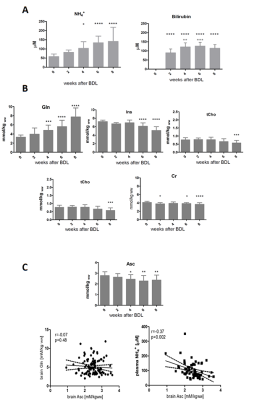 |
21 |
 Oxidative stress measured by in-vivo, longitudinal 1H MRS and ex-vivo ESR spectroscopy in a rat model of chronic Hepatic Encephalopathy Oxidative stress measured by in-vivo, longitudinal 1H MRS and ex-vivo ESR spectroscopy in a rat model of chronic Hepatic Encephalopathy
Katarzyna Pierzchala, Veronika Rackayova, Olivier Braissant, Dario Sessa, Stefanita Mitrea, Andrzej Sienkiewicz, Valérie A. McLin, Rolf Gruetter, Cristina Cudalbu
Oxidative stress is believed to play a role in the pathogenesis of chronic hepatic encephalopathy (CHE), however no in-vivo studies to assess the course of cerebral oxidative stress in CHE were performed. We investigated the oxidative stress in the hippocampus of a rat model of chronic HE using in-vivo and longitudinal 1H-MRS combined with ex-vivo ESR spectroscopy. Early changes in brain antioxidants (Asc, 4weeks post-BDL), concomitant with Gln and NH4+ changes were detected for the first time in-vivo. These results were confirmed by ESR spectroscopy suggesting that central oxidative stress is an early event in CHE.
|
 |
0449.
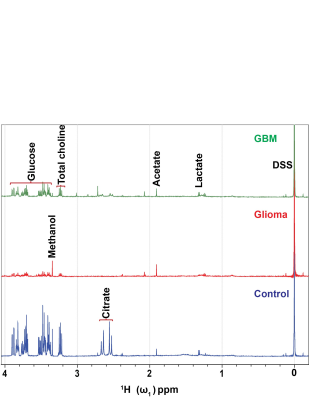 |
22 |
 NMR spectroscopy based blood test to diagnose brain cancer at early stages NMR spectroscopy based blood test to diagnose brain cancer at early stages
Shivanand Pudakalakatti, Alessandra Audia, Anirudh Mukhopadhyay, Krishna Bhat, Pratip Bhattacharya
Early detection of brain cancer will help saving lives. The currently available diagnostic techniques are not robust and expensive. Therefore, it is necessary to develop cost effective, minimally invasive, and highly sensitive analytical tools to identify brain tumors at an early stage. In this study we are investigating metabolism based biomarkers in platelets derived from low grade glioma II, glioblastoma, and healthy patients identified by nuclear magnetic resonance (NMR) spectroscopy. The platelet metabolites - glucose, citrate, and succinate are determined to be promising candidates for identifying and differentiating different stages of brain tumors with implication of employing simple blood based NMR metabolomics for early detection of brain cancer.
|
|
0450.
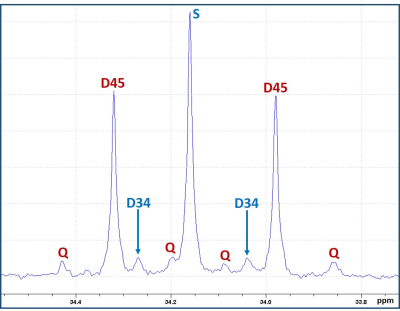 |
23 |
 Human Glioblastoma Cell Lines Co-oxidize [2,4-13C]betahydroxy-butyrate and [U-13C]-glucose: A 13C NMR Spectroscopic Study Human Glioblastoma Cell Lines Co-oxidize [2,4-13C]betahydroxy-butyrate and [U-13C]-glucose: A 13C NMR Spectroscopic Study
Omkar Ijare, Athena Hoppe, Cole Holan, Martyn Sharpe, David Baskin, Kumar Pichumani
Ketogenic diet has been proposed for the adjuvant therapy in the treatment of brain tumors. The rationale behind using ketogenic diet in the cancer treatment is the inability of tumor mitochondria to oxidize KBs. Recent studies on ketone body metabolism using 9L and RG2 cell lines and glioma models suggest that brain tumor mitochondria are capable of oxidizing ketone bodies. The current study was undertaken to determine relative utilization of betahydroxy-butyrate (BHB) and glucose in patient-derived glioblastoma cells. Our findings clearly indicate that human brain tumor cells are fully capable of oxidizing ketone bodies even under normoglycemic conditions.
|
|
0451.
 |
24 |
 Patch-based super-resolution of 7 T MRSI of Glioma: Initial results Patch-based super-resolution of 7 T MRSI of Glioma: Initial results
Gilbert Hangel, Saurabh Jain, Eva Hecková, Bernhard Strasser, Michal Povazan, Stephan Gruber, Elisabeth Springer, Georg Widhalm, Matthias Preusser, Siegfried Trattnig, Diana Sima, Dirk Smeets, Wolfgang Bogner
The application of high-resolution MRSI at 7T to the measurement of brain tumours was recently shown with preliminary data. In order to better resolve the glioma structure and metabolism for clinical use, a further increase in resolution over the currently achievable would be necessary. This can be achieved by the application of modern image up-sampling techniques. Therefore, we demonstrate the successful application and benefits of one such technique, patch-based superresolution, to 7T MRSI maps in glioma patients. Our results show the resolution of metabolic hotspots with unprecedented detail.
|
 |
0452.
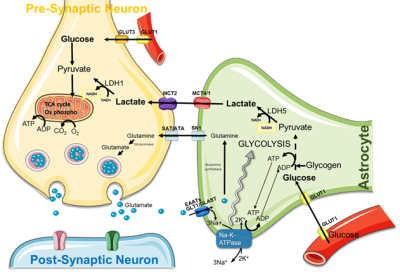 |
25 |
 IMPORTANCE OF THE LACTATE SHUTTLE FOR BRAIN ACTIVATION: AN IN VIVO LOCALIZED 1H-MRS AND FUNCTIONAL MRI STUDY DURING WHISKER STIMULATION IMPORTANCE OF THE LACTATE SHUTTLE FOR BRAIN ACTIVATION: AN IN VIVO LOCALIZED 1H-MRS AND FUNCTIONAL MRI STUDY DURING WHISKER STIMULATION
Jordy Blanc, Charlotte Jollé, Hélène Roumes, Nicole Déglon, Luc Pellerin, Anne-Karine Bouzier-Sore
Although several in vitro and ex vivo evidence support the existence of lactate exchange between astrocytes and neurons, a direct demonstration in vivo is still lacking. The aim of this study was to determine if the neuronal lactate transporter MCT2 is required for proper substrate use by neurons during brain activation. We therefore quantified the brain lactate content by 1H-NMR spectroscopy shRNA-control injected rats (called UNIV rats), MCT4 knockdown rats (called MCT4 rats) and MCT2 knockdown rats (called MCT2 rats), at rest or during whisker stimulation. Moreover, we examined the BOLD fMRI response of the somatosensory cortex associated with whisker stimulation.
|
|
0453.
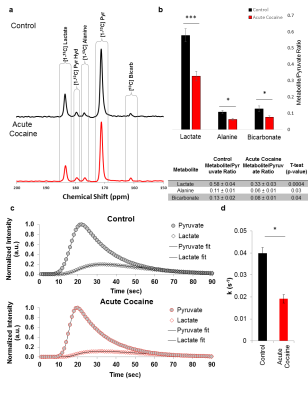 |
26 |
 Real time observation of shifts in cerebral metabolism caused by cocaine administration via MRS, DNP, and NMR Real time observation of shifts in cerebral metabolism caused by cocaine administration via MRS, DNP, and NMR
Joanna Long, Daniel Downes, James Collins, Marcelo Febo, Bimala Lama
The high energy requirements of the brain are sustained by a unique metabolic relationship between astrocytes and neurons. Here, we show how cocaine administration shifts neurometabolism at a fundamental level. Using a novel approach combining dynamic nuclear polarization-enabled metabolic flux measurements with steady state magnetic resonance measures of metabolite pools, we reveal acute cocaine administration disrupts the balance of oxidative and non-oxidative metabolic pathways. These results demonstrate significant metabolic shifts in response to cocaine administration, providing insight into the observed short-term effects of cocaine use.
|
|
0454.
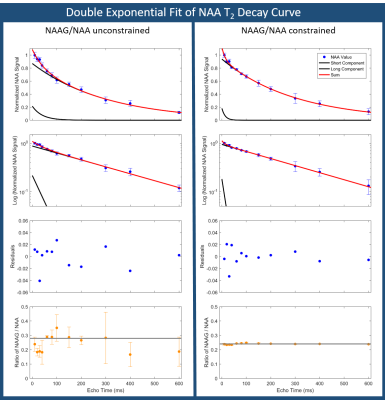 |
27 |
 Evidence for Two T2 Components of N-Acetyl-Aspartate (NAA) In Healthy White Matter Evidence for Two T2 Components of N-Acetyl-Aspartate (NAA) In Healthy White Matter
Erin MacMillan, Carina Graf, Cornelia Laule, Alex MacKay
N-acetyl-aspartate (NAA) is commonly referred to as an ‘axonal marker’ but recent electron microscopy evidence demonstrates higher levels of NAA in myelin than in neurons. Given the multi-exponential T2 nature of water in white matter (WM), we sought to determine if there are similarly two pools of NAA in WM. We performed multi-echo magnetic resonance spectroscopy in the WM of 5 healthy volunteers at 3T with TE from 10-800ms and observed a short T2 component between 13-40ms arising from 16-20% of the total signal. These preliminary results encourage further research into the bi-exponential nature of NAA in WM.
|
|
0455.
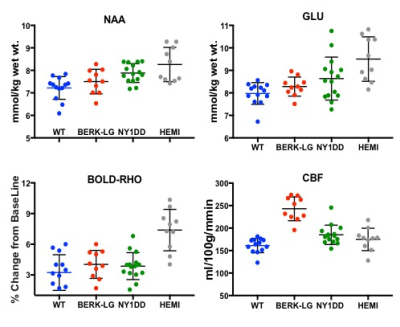 |
28 |
 Elevated brain NAA occurs without loss of neuronal integrity and correlates with increasing Sickle Cell Disease related stress. Elevated brain NAA occurs without loss of neuronal integrity and correlates with increasing Sickle Cell Disease related stress.
Min-Hui Cui, Seetharama Acharya, Sandra Suzuka, Henny Billett, Craig Branch
Brain NAA is known to be elevated in Canavan’s disease but is usually decreased in association with loss of neuronal integrity. Elevated NAA is herein reported in murine models of sickle cell disease (SCD) and is associated with anemia, hypoxic and oxidative stress and may reflect increased glutathione turnover and / or increase demand for mitochondrial energy. These findings provide insight into why elevated NAA has been observed in children but not adults with SCD, and suggests a mechanism for increased susceptibility to stroke, and alternative roles for NAA in the brain.
|
|
0456.
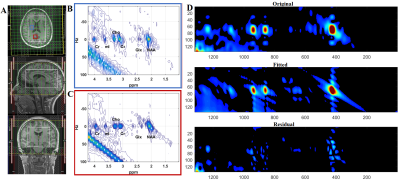 |
29 |
 Cerebral Metabolite Changes and Sleep Correlates in Obstructive Sleep Apnea Cerebral Metabolite Changes and Sleep Correlates in Obstructive Sleep Apnea
Manoj Sarma, Paul Macey, Andres Saucedo, Maithili Gopalakrishnan, Zahra Meghjani, Zohaib Iqbal, Rajakumar Nagarajan, Ravi Aysola, Ronald Harper, M. Albert Thomas
Obstructive sleep apnea (OSA) is a chronic, multisystem sleep disorder that has been linked with dementia, stroke and increased risks of cardiovascular disease. Continuous positive airway pressure (CPAP) is the most common treatment method for OSA patients, but its effect on different organ systems and to reverse the rate of cognitive decline is still unclear. In this study, we evaluated neurochemical changes of untreated and CPAP treated OSA patients versus healthy controls in twelve brain regions using a semi-laser based accelerated five-dimensional (5D) echo-planar J-resolved spectroscopic imaging (EP-JRESI) sequence. We also explored the relationship between brain metabolite ratios and apnea hypopnea index (AHI), a measure indicative of the severity of sleep apnea. We observed significant differences of several metabolites in many brain regions. We also found that, among other metabolites, AHI correlated positively with lactate in right parietal insular cortex. This may be the result of hypoxemia and tissue hypoxia during sleep caused by OSA. To validate our findings, further longitudinal studies using a large cohort of OSA subjects before and after CPAP are required.
|
|
0457.
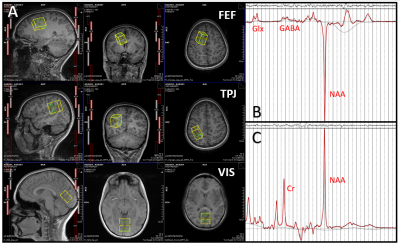 |
30 |
 Cortical GABA levels correlate with visual search performance in children with autism spectrum disorder Cortical GABA levels correlate with visual search performance in children with autism spectrum disorder
David Edmondson, Pingyu Xia, Debra Patterson, Brandon Keehn, Ulrike Dydak
Although diagnosed based on sociocommunicative deficits, autism spectrum disorder (ASD) is characterized by superior performance on selective attention tasks, particularly visual search. In neurotypical individuals, region-specific concentrations of GABA are associated with differences in attention and perception. While it has been hypothesized that ASD may be associated with an excitatory-inhibitory imbalance, it remains unclear how this may contribute to autistic search advantage. To test this, 10 children with ASD participated in a magnetic resonance spectroscopy (MRS) study using MEGA-semi-LASER to detect GABA concentrations in target regions, including the frontal eye fields, temporal parietal junction, and visual cortex.
|
|

 Watch the full Pitch Session Here
Watch the full Pitch Session Here















